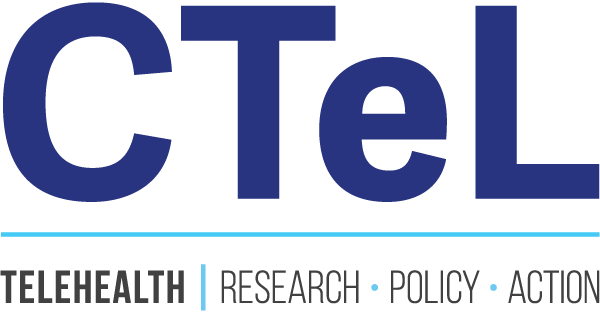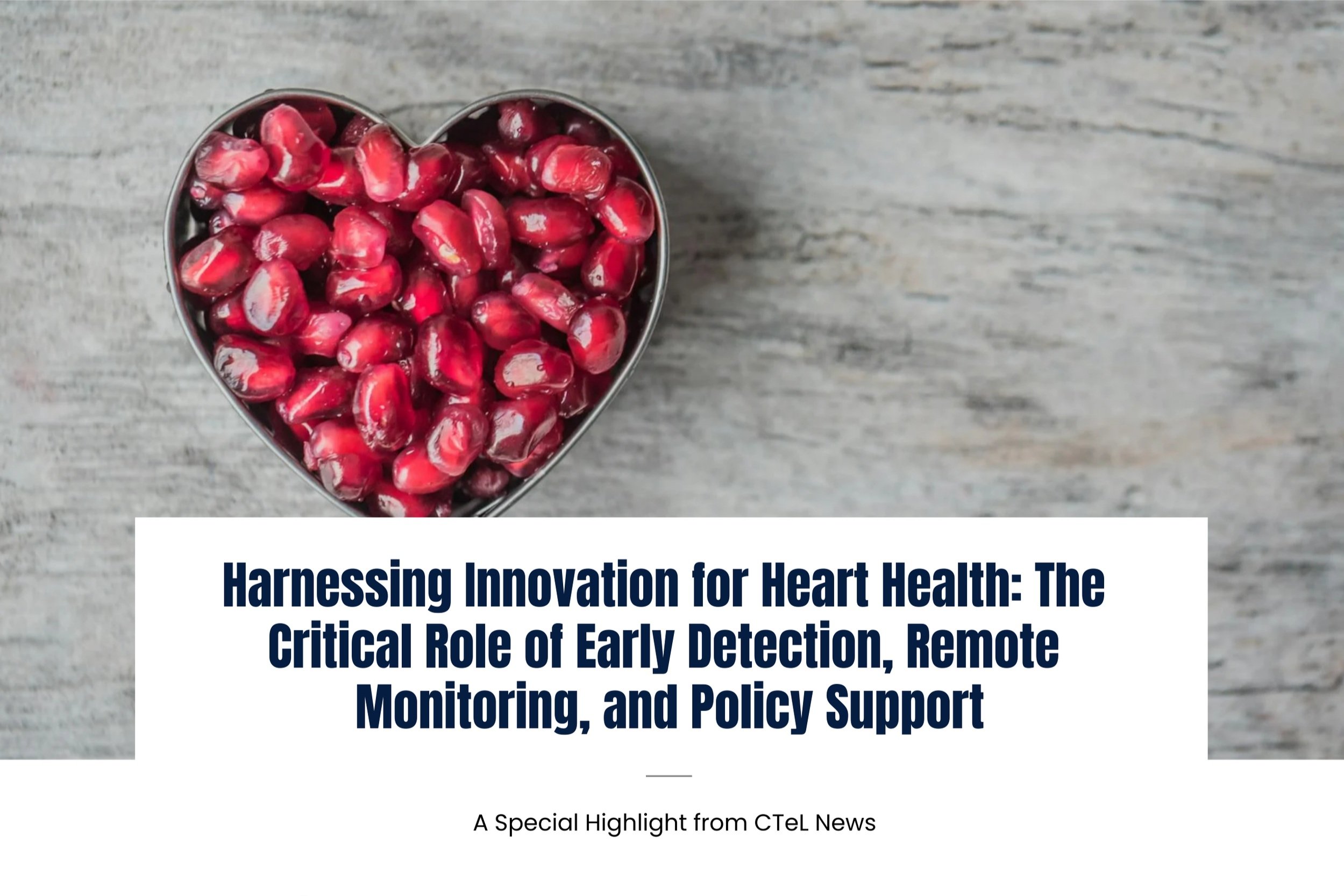Harnessing Innovation for Heart Health: The Critical Role of Early Detection, Remote Monitoring, and Policy Support
Every 33 seconds, someone in the United States dies from heart disease (American Heart Association [AHA], 2019). Despite advancements in medical technology, the silent progression of cardiovascular diseases often leads to late-stage diagnoses and preventable deaths. Early detection and remote monitoring have emerged as crucial solutions to this crisis, offering a proactive approach to cardiac care. Through cutting-edge technology like Sensora’s AI-driven platform and EKO Health’s Core 500 stethoscope, providers can identify conditions such as valvular heart disease, atrial fibrillation, and low ejection fraction in primary care settings—before they become life-threatening emergencies (Optimize Health, 2022; Rashid et al., 2022).
However, for these innovations to reach their full potential, we must address systemic barriers to adoption, including regulatory challenges, limited reimbursement structures, and resistance to technological change. A partnership between CTeL and EKO Health seeks to ensure that policy frameworks evolve to support life-saving technologies rather than hinder their accessibility. This paper explores how early detection, remote patient monitoring (RPM), and healthcare innovation are transforming patient outcomes—and why policy advocacy is essential to sustaining this progress.
The Power of Early Detection: A Life-Saving Story
Miss Fern never suspected she had heart disease. She was a hard worker, active in her community, and had never experienced severe symptoms—until one day, she struggled to walk back from her driveway. When she visited her clinic, a routine checkup changed everything. Her provider, using EKO Health’s Core 500 stethoscope integrated with Sensora’s AI analysis, detected a murmur. Further testing revealed that two of her heart valves were failing. Thanks to early intervention, she received timely treatment, preventing irreversible heart failure. “I never would have known,” she said. “This technology saved my life.”
Fern’s story is not unique. Research shows that 68% of heart failure cases go undiagnosed in primary care, and up to 50% of valvular heart disease cases in elderly patients are missed (Rashid et al., 2022). Without accessible early detection tools, countless individuals remain unaware of their conditions until hospitalization is unavoidable.
How Remote Patient Monitoring Enhances Outcomes
RPM has become a game-changer in chronic disease management. By enabling real-time tracking of key health metrics, RPM reduces hospitalizations, improves medication adherence, and empowers patients to take charge of their health (AHA, 2019; Optimize Health, 2022). According to the American Heart Association, RPM can facilitate early intervention, improving both survival rates and quality of life for cardiac patients. A study conducted in partnership with the Louisiana Department of Health demonstrated the stark reality of undiagnosed cardiovascular disease: 25% of individuals over age 60 screened had pathological murmurs, and more than half did not have a primary care provider (Rashid et al., 2022). Without RPM, these patients might never have received the care they needed.
Sensora’s AI-driven analysis and EKO Health’s advanced stethoscopes provide a seamless solution. With just a two-minute, non-invasive exam, clinicians can detect heart abnormalities in real time. As one nurse noted, “Patients love that it’s quick and painless. They feel reassured knowing we’re using the latest technology to safeguard their health.”
Economic and Accessibility Benefits of RPM
Beyond improving health outcomes, RPM offers significant economic and accessibility advantages. Cardiovascular disease contributes to nearly 90% of all healthcare costs, making proactive monitoring a financially sound investment (AHA, 2019). By preventing emergency interventions and hospital readmissions, RPM reduces the burden on healthcare systems.
Additionally, RPM bridges healthcare disparities by bringing cutting-edge diagnostics to rural and underserved communities. Many individuals, particularly seniors and those with mobility limitations, struggle to attend frequent in-person appointments. With RPM, these patients receive continuous monitoring from the comfort of their homes, ensuring they receive timely interventions when needed (Optimize Health, 2022).
Breaking Barriers: Why Policy Support is Essential
While innovations like Sensora and RPM have the potential to revolutionize healthcare, systemic barriers remain. Limited reimbursement for remote monitoring discourages provider adoption, while restrictive regulatory policies can delay access to life-saving devices (AHA, 2019). CTeL and EKO Health are committed to advocating for policy changes that:
Expand Medicare and private insurance reimbursement for RPM and AI-assisted diagnostics.
Streamline regulatory pathways to ensure that effective technologies reach patients without unnecessary delays.
Encourage adoption in primary care settings by integrating AI-powered tools into standard medical practice.
Conclusion: The Future of Cardiac Care
Fern’s story exemplifies the impact of early detection and RPM. By leveraging AI, remote monitoring, and smart diagnostic tools, we can shift healthcare from reactive treatment to proactive prevention. However, realizing this vision requires more than technological innovation—it demands a healthcare system that embraces change, removes barriers, and prioritizes patient outcomes.
CTeL and EKO Health are dedicated to ensuring that no life-saving technology is left behind due to outdated policies or insufficient reimbursement. Together, we can build a future where heart disease is no longer the leading cause of death, but a condition managed through innovation, early intervention, and equitable access to care.
References
American Heart Association. (2019). Remote patient monitoring guidance. Retrieved from https://www.heart.org/-/media/files/about-us/policy-research/policy-positions/clinical-care/remote-patient-monitoring-guidance-2019.pdf?la=en
Optimize Health. (2022). The importance of RPM in cardiac care. Retrieved from https://optimize.health/blog/the-importance-of-rpm-in-cardiac-care/#:~:text=Monitoring%20pulse%20rate%2C%20in%20conjunction,of%20care%20for%20many%20patients%E2%80%9D.
Rashid, M., Nambiar, L., Gale, C. P., Wu, J., Duncan, E. R., Roos-Hesselink, J. W., & Kwok, C. S. (2022). Role of artificial intelligence in the diagnosis of valvular heart disease and atrial fibrillation: A systematic review. Journal of Medical Internet Research, 24(11), e32716. https://doi.org/10.2196/32716


